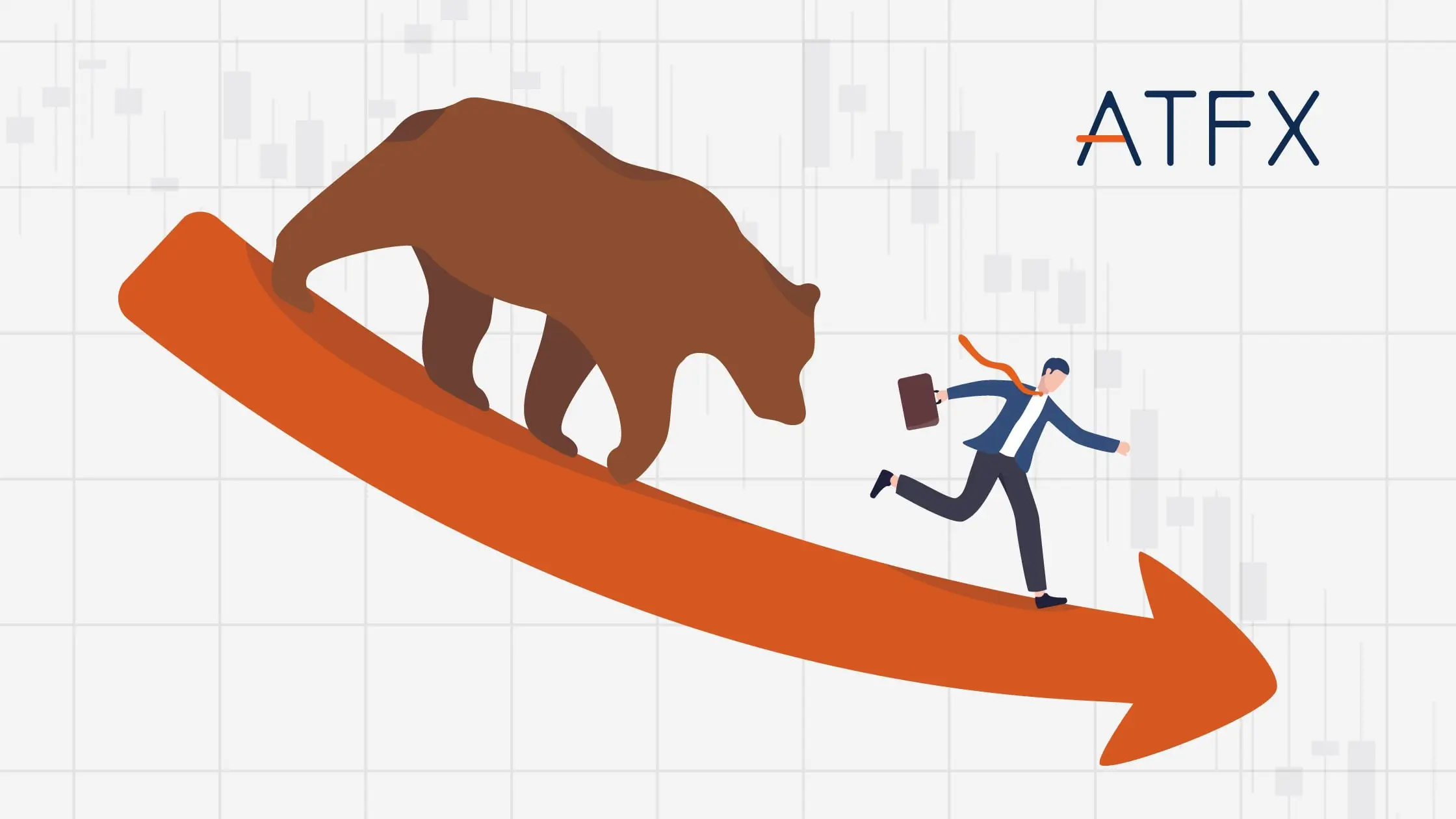We don’t want you to be one of those statistics that falls into the ‘failed trader’ category. Understanding why traders fail is the first step towards avoiding that fate. If things aren’t going right, how do you turn it around? We’ll offer up some straightforward remedies, to help you get back on track.
Why do day traders fail? 10 reasons why day traders fail
There are lots of reasons traders fail. We’ll cover the ten biggest reasons, from risk management to psychology, from trading plans to broker choices. Let’s make sure that if you recognise some of these traits in your own trading, you take action immediately.
1. Thinking trading is easy money
If online financial trading were easy money, we’d all be millionaires; in fact, there’d be no market because no one would lose. It’d be like playing a broken slot machine that kept paying out. Unfortunately it’s not easy and it won’t keep spitting out money. All you have to do is look at the failure rate of most brokers to confirm that trading isn’t easy money.
So, why do people think it’s easy money?
It’s glamorised by popular culture. The internet, film and other media all show it to be easy. They tell the story of the few that make it big, without showing the majority who have struggled.
You might even have friends who trade and tell you when they’ve had a good day. You’re thinking – ‘it must be easy if they can do it’. However, they probably don’t tell you when they’ve had a bad day.
How would a professional think?
If you were to ask an experienced trader, they’d tell you that knowing mistakes traders make from the outset could have saved them a lot of the pain and frustration. It’s worth repeating: there are no shortcuts, but if you recognise this and cut out the mistakes now, you’ll get to where you want to be a lot quicker.
What’s the solution to thinking trading is easy?
/analysis-trading-strategies-why-do-day-traders-fail-people-image.jpg)
Get into trading with your eyes open. Don’t let a tabloid story influence your thinking. Concentrate on learning the basics, controlling your emotions, putting in place strict money management rules, and learning how not to lose.
Find someone you can trust in the industry and speak to them, if your broker is regulated, reach out to them . Despite misconceptions, most regulated brokers want you to succeed. The better you do, the better they do. Reach out for a chat.
2. Sticking to one trading strategy and be consistent
There is no one size fits all solution to trading. Markets rhyme, but they never repeat. Every moment in the market is unique; therefore, you have to be ready to adapt to this ever-changing landscape. And what works one day might fall flat the next.
Why can’t I change my strategy if it doesn’t work?
You can. However, you need to prove that it doesn’t work first. If you take 10 of the same trade and find that only two are successful then you could reasonably argue that it doesn’t work.
But a counter argument is that if you take that same trade another 90 times, making a total of 100 trades, there’s a chance that you might make 60 successful trades and 40 will fail proving that the strategy does work. Be consistent and give it time. Impatience is a big reason traders fail.
How do you know when to change?
You need to test your strategy and have confidence in it for the long term. Make sure you have set robust criteria to enter the trade and remember to track your results. Without a clear record, you won’t be able to properly analyse your trading performance.
3. Their emotions get in the way. [Trading psychology]
As a trader, you have to be highly adaptable, park your ego and realise that the market is not out to get you. The financial markets don’t care about you, they don’t have emotions. You need to adopt the same persona; never take it personally and never look for revenge.
Why are emotions so bad?
Some aren’t. Patience is both an emotion and a skill, and is a great virtue. However, other emotions like greed and nervousness will cloud your judgement and remove the consistency a trading plan provides. The idea is to be robotic, take the same trade blueprint and trade it over and over again , despite what the markets and your emotions are telling you.
Signs that emotions are getting in the way
- Cutting profits short. You have a target in mind but you see the market go against you slightly, so you panic and take your profit too soon. The market may well have reached your target before your stop, but you will have cut your profits short because of your emotions.
- Letting losers run. The market is going against you and approaching your stop loss, so you move your stop further away to ‘make sure’ it doesn’t get hit. The market continues against you and it gets hit anyway. Now you have a trade that lost more than you originally planned.
- Adding to your trades. You see the market going in your favour, so you buy more (or sell more). The market reverses and now you are left with a larger trade and larger losses because you got carried away by a temporarily favourable market.
How to manage your emotions?
You can control your emotions by adopting a forensic approach to your trading from day one. Creating a trading plan and sticking to it will help remove emotions from your trading.
It’s also important to record your trades. Seeing your results in black and white will show you how well (or not so well) you’ve been sticking to your plan.
4. Not enough planning and understanding of Risk management
Plan your trades and trade your plan. You’ve heard it a lot and you’ll continue to hear it, you need to create a trading plan. Then you need to stick to it and be strict with your risk management rules. Novice traders often overlook the impact risk can have on their trading.
How much to risk per trade?
Before we answer that, remember that longevity is the key to trading success. So, with that in mind, let’s look at an example.
- Imagine you risk 0.5% of your account per trade (if you have an account of £2,000, then 0.5% would be £10 per trade).
- If you take losses of £10 each time, you will need 200 consecutive losing trades to blow your account.
- Now, imagine you risk 5% per trade.
- That would only be 20 losing trades in a row for your funds to disappear.
- Why 20 trades? Well, 5% of £2000 is £100, so if you lose £100, twenty times in a row you would have lost all the capital in your trading account.
As you can see, the amount you risk per trade has a huge affect on how quickly you potentially could lose. The same is true for how much you could win, but this is one of the reasons traders do fail – they risk too much on each trade and blow their accounts quickly.
Set from day one what you perceive to be a reasonable level of risk and stick to it (the smaller the better for longevity).
Can I make any money risking only 0.5%?
You can. Another quick reminder that longevity is key to trading success. It’s those traders who want to make money instantly that will struggle.
If you’re risking 0.5% to make 0.5% (a 1:1 risk to reward ratio), and you make one more successful than unsuccessful trade every week for 50 weeks, your account would be up 25% on the year. The same applies if you were to lose one more trade each week, just in this case you would be down 25%.
This very brief example illustrates how simple risk management aims, matched with realistic, patient ambitions written into a trading plan, can provide an excellent base from you to progress.
/analysis-trading-strategies-why-do-day-traders-fail-ipad2-image.jpg)
5. Not enough trading analysis
To succeed, you must learn how to analyse the markets. If you don’t analyse the market and come up with a view, you might as well flip a coin.
Therefore being proficient at either technical or fundamental analysis (ideally both) will help you make better trading decisions.
When is enough analysis?
Enough is when you’ve created a strategy based on some form of analysis that has proven to work.
You could add more to create a different strategy but if you understand enough to have one that works, then you’re on the right track for success.
Which should I learn, technical or fundamental analysis?
It’s up to you. Gathering a fundamental view of the market tends to take longer. You need to understand the macroeconomic and geopolitical factors in play that might alter market sentiment.
A technical approach is normally easier for beginners because you can learn a rule based strategy in less time and without having to have a deep understanding of economics.
In an ideal world, you would use both to come up with a strategy. If your fundamental view agrees with your technical, then you have extra confirmation of the market direction.
6. Following the wrong advice
The online retail trading industry is awash with information from blogs, websites, forums, articles, webinars, e-books, etc. Ensuring you’re getting the right advice is important. ‘Fake news’ unfortunately is rife, so make sure you do your research and find a vendor you trust.
Where do I start looking for advice?
Your chosen broker should be your first port of call for credible information. Your broker should want you to succeed. It’s in their interests because successful, confident traders trade more. Your broker should publish market analyses, market news, e-books and blogs to help you make progress.
After your broker, you should be looking at well established publishers and those that write for them. Or if you’re lucky enough to know and trust someone in the industry then utilise their advice.
Forums can be hazardous environments for traders because many marketers will post trying to sell you their products. The volume of opinion and noise can be both confusing and overwhelming.
Make sure you test the advice you receive to see if it’s accurate. Look at analyses and predictions and check later how accurate they were.
7. Allowing small losses to turn into significant losses
We touched on this in point 3. Never allow your losses to grow. You should have stop losses in place to limit the potential damage to your trade.
Start by deciding what risk you’re prepared to attach to a trade and the point the market needs to reach before it makes your trade invalid.
How would small losses become large losses?
- Adding to losing trades. The idea that you’re ‘getting a better price’ is dangerous. If you have planned to lose a certain amount on the trade and you add more to it, you are suddenly risking more than your original plan. Don’t fall into this trap.
- Moving your stop loss away. If the market is approaching your stop loss, it is very easy to move it away just ‘to allow the market to bounce back’. More often than not this doesn’t happen and you keep moving it away. Before you know it, you’re losing more than you had originally planned and are praying for it to go back to your original stop level. The stop should be there for a reason. If it gets hit, it’s because your strategy wasn’t right on this one.
8. Not taking transaction costs into account
It’s helpful to have a clear understanding of what you’ll pay in charges to your broker for each trade. If you’re a day trader, low costs are crucial to making your method and strategy work.
For example, if you were to take an average of 10 trades a day, at £10 per pip. Comparing two brokers, one that charges on average 3 pips per trade with one that charges 1 pip per trade, let’s have a look at the sums below:
Broker 1 charges 3 pips per trade.
– 10 trades = 30 pips paid to the broker
– 30 pips x £10 = £300 fees to the broker
Broker 2 charges 1 pip per trade.
– 10 trades = 10 pips paid to the broker
– 10 pips x £10 = £100 fees to the broker
You can see that your bottom line would be £200 poorer when using broker 1 compared with broker 2.
Like any business, you have fixed and variable costs. Controlling both of these is essential to success. Squeezing these costs to a minimum is your responsibility. You should carefully analyse your brokers fees to ensure you’re not paying too much for spreads, commissions or overnight charges.
9. Choosing the wrong type of broker
/analysis-trading-strategies-why-do-day-traders-fail-chart-image.jpg) You must avoid choosing the wrong type of broker. The online trading industry has very high standards, and many brokers have put in place robust compliance foundations to ensure the safety of your funds.
You must avoid choosing the wrong type of broker. The online trading industry has very high standards, and many brokers have put in place robust compliance foundations to ensure the safety of your funds.
Which broker is the wrong broker?
A broker that’s not regulated is the wrong broker. Why? Because they don’t have oversight from financial regulators that are specifically put in place to ensure the safety of your funds. There are lots of other criteria that you should look for when choosing a broker but one of the most important is whether they’re regulated or not.
How do I know if they’re regulated?
If a broker is regulated, they’ll make it fairly clear to you. Why wouldn’t a broker want to promote the fact that it’s regulated by an authority that looks out for your money? Look for clues on their website. They might have a page dedicated to the regulators or you might find a mention in the footer of the homepage.
10. A bad Risk-Reward ratio
Your risk-reward ratio (RRR) aligns with your hit rate (the amount of successful trades you take).
A bad RRR would mean that over a set amount of trades, you end up losing more money than you make.
Below are examples of RRR and the minimum hit rate required to be profitable:
Risk to reward ratio | Minimum hit rate |
| 1:1 | 50% |
| 1:2 | 33% |
| 1:3 | 25% |
| 1:0.7 | 60% |
| 1:0.3 | 75% |
As you can see, the smaller your RRR, the higher your hit rate needs to be. Therefore it’s not just a bad RRR you need to look out for, it’s the combination of RRR and hit rate.
Which RRR should I aim for?
This will depend on your strategy. Test to see how often your trades are successful (what your own hit rate is) and then you’ll know what RRR you need to be aiming for to be profitable.
How to become a successful trader?
There are lots of things you can do to become a successful trader. We’ve broken it down into three main areas that you need to focus on.
/analysis-trading-strategies-type-of-brokers-graph-image.jpg)
1. Acquire knowledge
Learning a new skill is exciting, during the process you will see yourself improving with time. Trading is no different. To be successful, you need to learn the ropes. Acquire as much knowledge as you can in the right order and you’ll start to see your understanding and results improve.
re you read about the subject, the more of an understanding you’ll have about the markets and what influences them. You’ll also learn something new with every trade you take, be it about yourself and your psychology or the market and how it behaves. The best way to learn is to keep trading. Athletes become Olympic athletes by practising and it’s the same with trading.
2. Build confidence and experience
Confidence is important in trading. Not confidence in yourself but confidence in your strategy. Taking the same trade every time without hesitation is difficult and when you don’t have confidence in your strategy, it’s even more difficult.
Confidence will come with experience. The more you prove to yourself that your strategy does work the more confident you’ll become. Lots of traders find trading a demo account a great place to build confidence, both in yourself and in your strategy.
You also know that you won’t be right 100% of the time, so having the confidence to be wrong and continue is also important. This comes with experience and patience. Don’t let losses knock your confidence, you’re in it for the long run.
3. Understand and manage the risk
You can’t hear this too much. Understand what risk is and understand how you can manage it to gain an element of control over your trading outcomes.
You don’t know what will happen in the market at any given moment but you can be sure to limit your risk per trade. And if your risk-reward ratio is on point, then you’re in line to achieve the returns you’re aiming for.
/analysis-trading-strategies-why-do-day-traders-fail-ipad-image.jpg)


